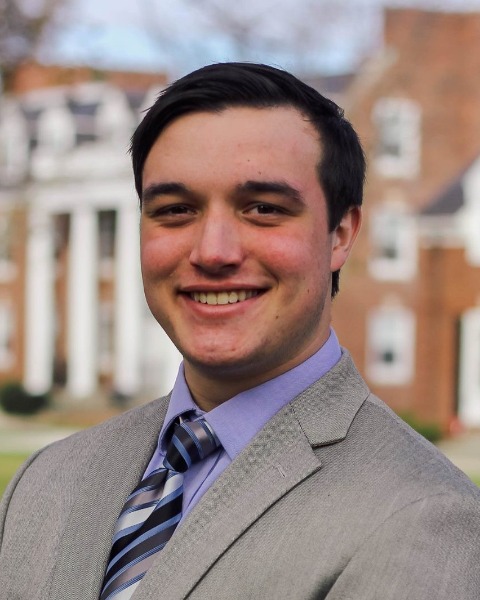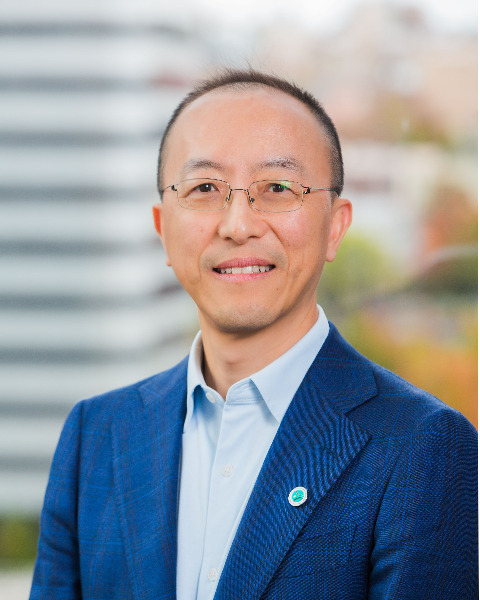Cancer Technologies
Engineered Cancer Models for In Vitro Studies
The Perivascular Niche Enforces Glioblastoma Stem Cell Dormancy in an In Vitro 3D Glioblastoma-Vascular Model
Saturday, October 26, 2024
9:15 AM - 9:30 AM EST
Location: Room 337

Nathaniel Silvia (he/him/his)
PhD Candidate
Northeastern University
Allston, Massachusetts, United States
Guohao Dai, PhD
Professor of Bioengineering
Northeastern University
Boston, Massachusetts, United States
Presenting Author(s)
Primary Investigator(s)
Introduction: Glioblastoma multiforme (GBM) is the most common primary brain tumor and its prognosis lands among the worst of any cancer diagnosis. The low survival is primarily caused by frequent tumor recurrence following standard treatments such as surgery, chemo-, and radiation therapy. Two key clinical features of GBM contribute to its high recurrence rate: invasion of primary tumor cells into healthy brain tissue, and the tendency of a subpopulation of glioblastoma stem cells (GSCs) to go dormant, especially in the perivascular niche. Cessation of cell proliferation undermines the main mechanisms of traditional cancer treatment, which kills mostly fast-dividing cells while sparing a small population of slow-dividing cells that reestablish tumors only months afterward. Understanding this subpopulation of GSCs is critical to developing effective and targeted GBM therapies. Studying these cells directly is impossible in humans, and the relative inaccessibility of animal model brain imaging presents a challenge for live tracking of cell proliferation in vivo. In 2D culture, GBM cells always proliferate fast, and therefore do not possess a dormant population. Thus, we aim to develop an in vitro blood brain barrier (BBB) GBM model to mimic a 3D GSC-vascular microenvironment to investigate the association between GSC dormancy and proximity to brain microvessels.
Materials and
Methods: To model the GSC perivascular niche, we encapsulated human primary astrocytes (ACs), pericytes (PCs), and brain endothelial cells (bECs) in a fibrin matrix and deposited samples on a well plate or in a microfluidic device (AIM Biotech). bECs were seeded in either disperse or spheroidal conformation. Spheroidal bECs undergo sprouting to produce vessels and disperse bECs undergo spontaneous vasculogenesis culminating vascular network formation by day 7 in culture (Fig 1A). For live-tracking of the dormant GSC population, we have designed a kinetic analysis system by CRISPR gene editing with tet-on doxycycline-inducible expression of histone2B-GFP (H2B-GFP) reporter expression in patient-derived GSCs. In the GSC perivascular niche model, dormant GSCs retain H2B-GFP signal (GFPhi) while proliferative cells undergo signal dilution (GFPlo) (Fig 1B). H2B-GFP GSCs were introduced to the model on day 0, and doxycycline exposure was continued for days 0-3. For the remainder of the experiment, doxycycline was removed to allow for observation of GSC proliferation state. Images were taken on days 1, 7, 14, and 21, and were analyzed for GFP signal in relation to distance from vessels.
Results, Conclusions, and Discussions: Three major conditions were prepared to examine the proliferation dynamics of GSCs in the perivascular model: 2D GSCs (2D G), 3D GSCs encapsulated in fibrin alone (3D G), and the full perivascular model as described in the Materials and Methods section (3D GAPE). In the control conditions, GFP signal depletes with sequential division of the entire cell population, with no detectable signal remaining by Day 14 (Fig 1C). By Day 21, 3D GAPE conditions retained a subpopulation of dormant (GFPhi) cells which appeared to primarily be associated with the perivascular area. To quantify this association, images at day 1, 7, 14, and 21 time points were analyzed to determine colocalization of GSCs with vessels and the perivascular area. By days 14-21, GFPhi cells were located preferentially on-vessel, with fewer cells in the perivascular area (20 µm from vessels) (Fig 1D). While the fibrin dot con formation of the perivascular GSC model provides a basis for the conclusion that dormant GSCs preferentially associate with vasculature, it is limited for its inability to generate a non-perivascular microenvironment, as vessels are rarely more than 20 µm from each other. To address this, EC spheroids were seeded for more effective visualization of dormant GSC colocalization with individual vessels sprouting from the initially seeded spheroid. Preliminary data indicates that EC spheroids undergo sprouting and generate relatively sparse vasculature (Fig. 1E). The GSC perivascular niche model provided a means of creating dormant GSCs in vitro and observing their location in relation to a generated vascular network. A subpopulation of GSCs entered a dormant state retaining histone-associated GFP signal in conditions containing endothelial blood brain barrier-associated supporting cells, while no such subpopulation arose in control conditions containing only GSCs. GFPhi GSCs preferentially colocalized with vasculature, indicating vascular proximity is a requisite factor for dormant cell state. This model allows us to isolate the most relevant GSC subpopulation with respect to treatment resistance. Downstream characterization of these cells using methods such as scRNA sequencing and proteomic analysis will reveal differential gene regulation. These findings will inform targeted treatments such as CAR-T therapy to combat GBM recurrence.
Acknowledgements (Optional):
